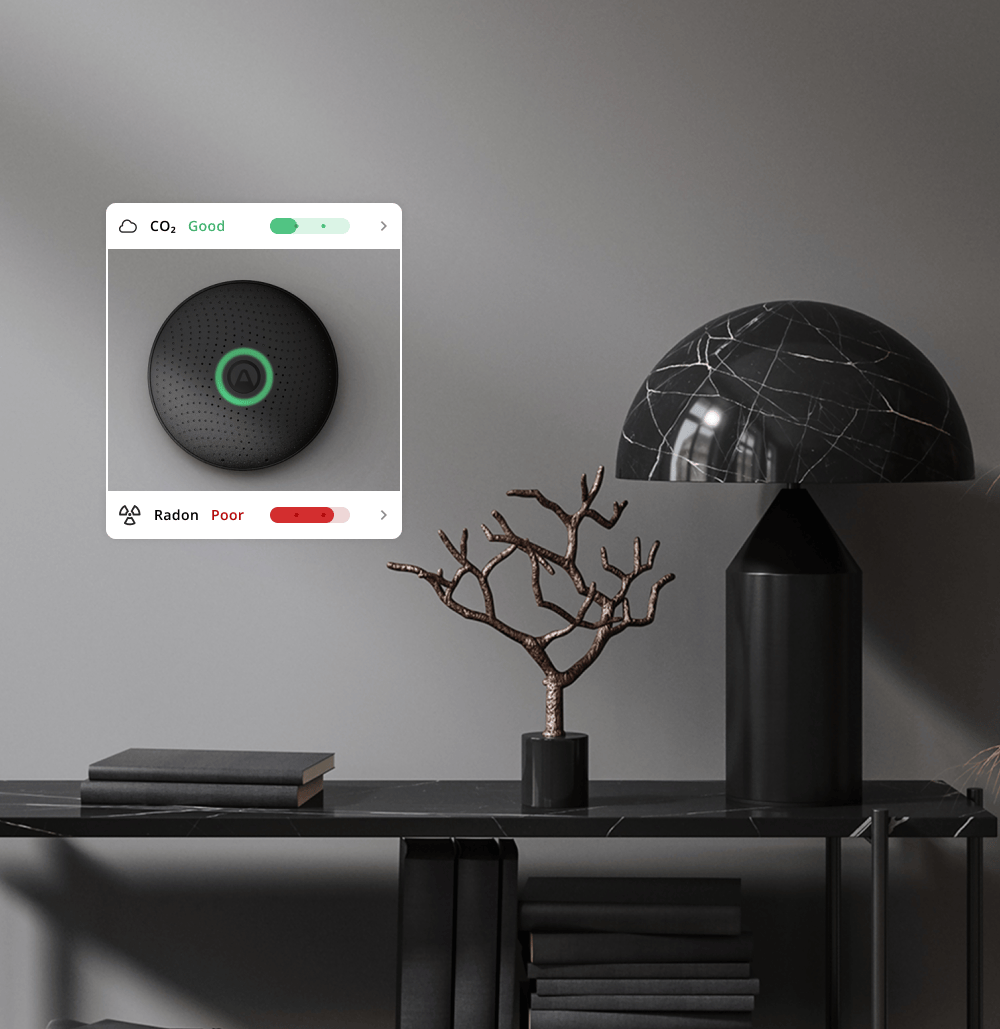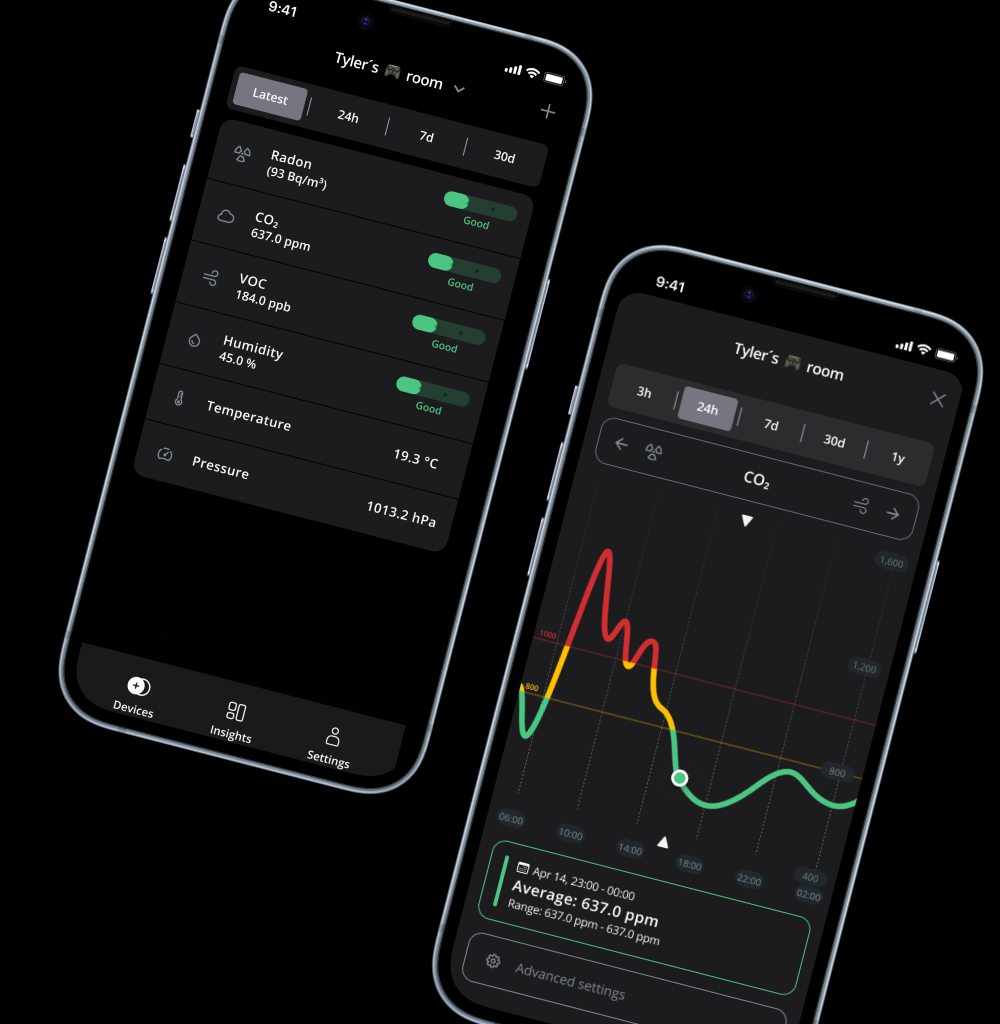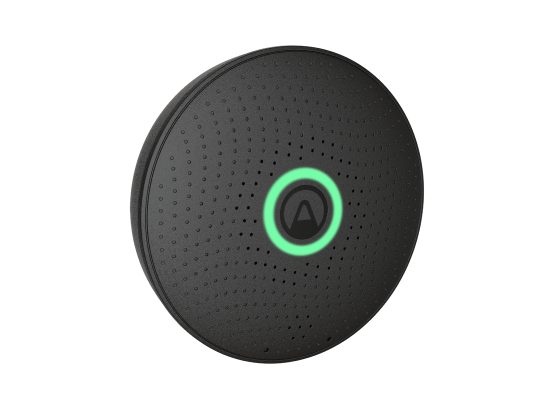 Loading...
Loading...
Monitor the air around you
![]() Radon
Radon
You can't see or smell it, but long-term exposure to this radioactive gas is the top cause of lung cancer in non-smokers.
![]() Carbon Dioxide (CO2)
Carbon Dioxide (CO2)
When it reaches high levels indoors, carbon dioxide (CO2) can cause poor sleep and trouble concentrating.
![]() Temperature
Temperature
Temperature is not just a matter of comfort, it can negatively affect sleep quality, mood, and alertness.
![]() Airborne chemicals (VOCs)
Airborne chemicals (VOCs)
Volatile organic compounds (VOCs) are airborne chemicals emitted by everyday items - many are harmless but some are toxic.
![]() Air pressure
Air pressure
Changes in air pressure affect radon levels and, for some, they can trigger headaches, joint stiffness and pain.
![]() Humidity
Humidity
High humidity promotes mold growth and aggravates asthma symptoms, while too-dry air can lead to skin and throat irritation.



